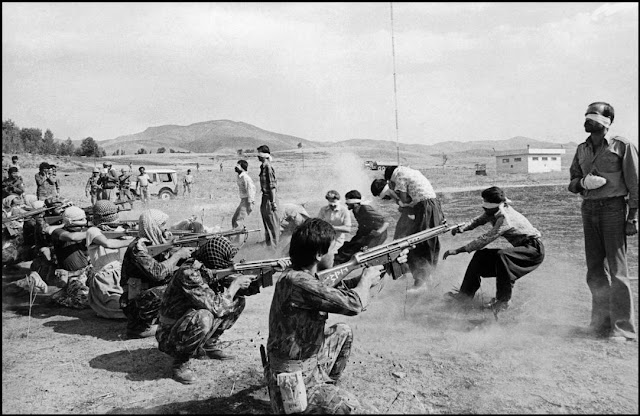In 1979 and after the Iranian nation's revolution against Shah's regime succeeded, the delegation of Kurdish representatives attempted to resolve the Kurdish issue in the East part of Kurdistan through negotiations with the Islamic Republic of Iran (IRI). However, Khomeini, the leader of IRI declared war (Jihad) against the Kurdish people and paved the way for the arrest, torture, and killing of the Kurds.
As a result of this antinational policy, the IRI forces carried out genocides in many villages, cities, and regions of Kurdistan. In addition, tens of thousands of people were arrested, tortured severely, executed, or shot.
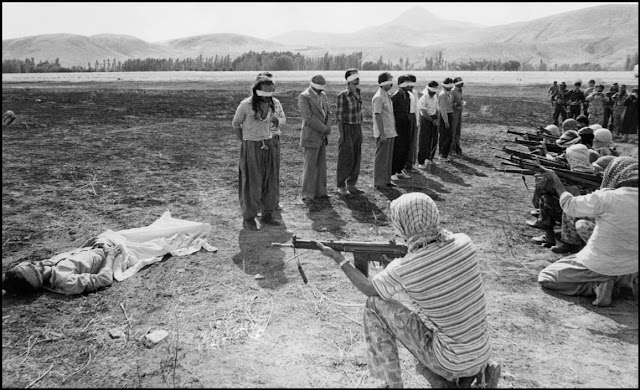
Two days before Newroz on March 18, 1979, the antinational IRI forces with a large-scale ground and air attack on Sna (Sanandaj) city killed hundreds of defend less citizens in this city. On another occasion on August 19, 1979, after Khomeini declared a Jihad order against Kurdistan, IRI forces once again planned a major ground and air attack on Sna city and killed 600 civilians.
In addition to these attacks and many other attacks on different parts and cities of Kurdistan and the martyrdom of Peshmerga and civilians, according to the information we have now, the IRI forces carried out genocide in 61 villages in the East part of Kurdistan and martyred at least 518 people. Undoubtedly, the number of martyrs is more than this.
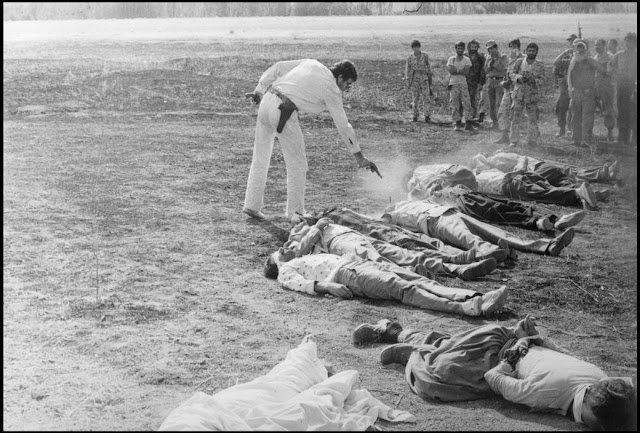
At the time of the genocide of Qarneh village in Nagada city, the Mullah of this village Mullah Mahmud Behtarzada met the armed forces with the Quran in his hand and pleaded them to swear to the Quran not to commit genocide, but Khomeini forces killed him and later cut his head brutally. Most of the victims of the Qarne village genocide were children of 6 to 10 years old.
In the massacre of people in the village of Mirawa in Urmia, a woman named Rafia Khedri the daughter of Shakir was killed who was 70 years old. A woman named Maryam Mustafazada was also massacred with her three children, another woman, Farida Mamadi with her two children, and a woman named Haifa Khidri with her only child.
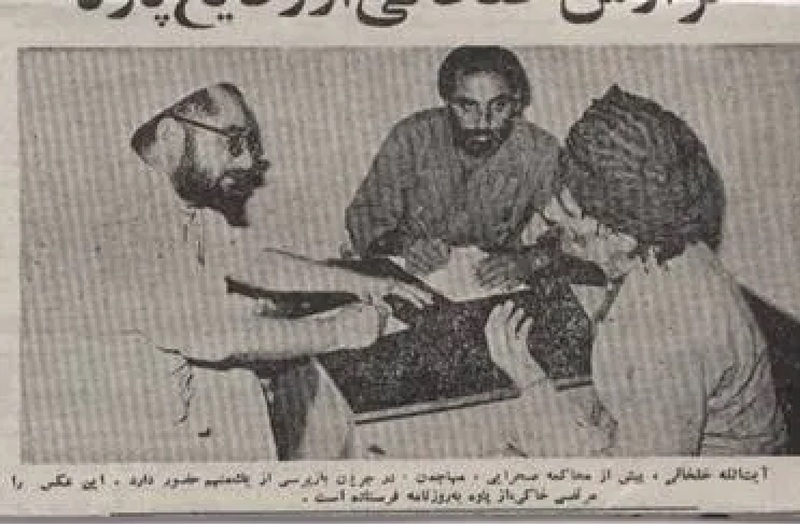
In those years when the regime was brutally massacring people, at least 51 villages were ruined or fired; among these 51 villages, one was a part of Sna city, 7 of them belonged to Piranshahr city, 13 villages were a part of Hawshar, and 30 other villages belonged to Urmia city.
According to a study conducted by the Kurdish author, Javad Danshpajouh, in addition to the victims of the genocide, at least 2287 people in the East part of Kurdistan were killed by the IRI forces; among them, 416 people were assassinated and the rest of them got killed mostly by execution, 134 of whom were women, and at least 59 of them were under the age of 18.
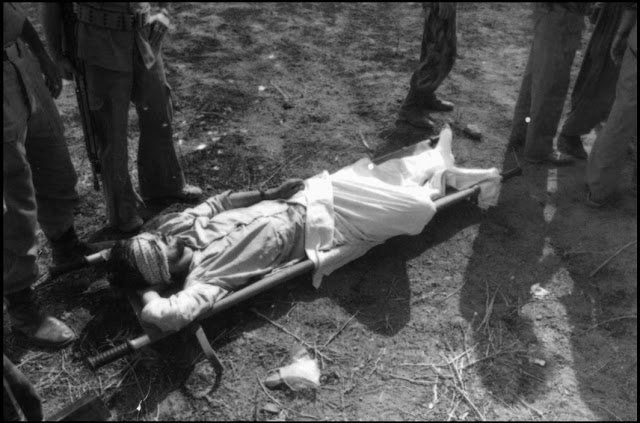
Terrorism in the Kurdistan Region Territory
Many of the terrorist acts carried out by the IRI against the eastern part of Kurdistan activists have been carried out on the territory of the Kurdistan Region. For instance, 25 terrorist activities in Hawler (Erbil), 31 terrorist activities in Koya, 25 terrorist activities in Ranya, and 81 terrorist acts in Suleimani. The IRI has committed terrorist acts in many other villages and regions. From 2018 to 2023 in the Kurdistan Region, 6 people were assassinated, one of whom was a Peshmerga force and the rest were members of HDPI (the Democratic Party of Kurdistan of Iran).
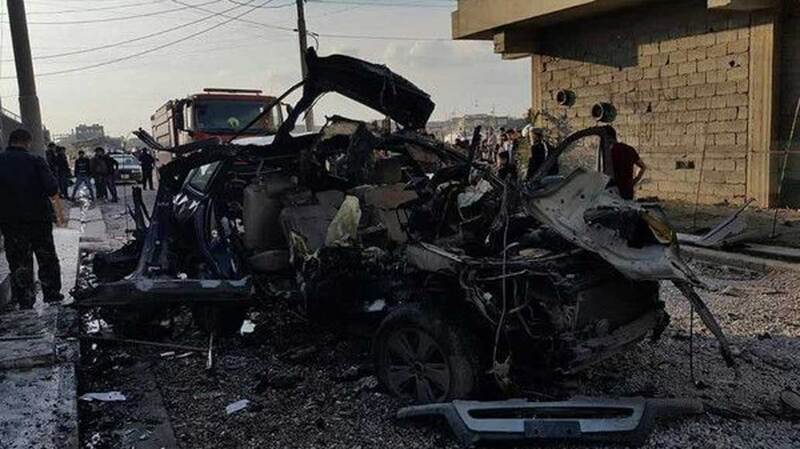
The car of Selah Rahmani, a member of the Democratic Party of Kurdistan of Iran
Apart from these, the IRI forces once killed 46 people, two of whom were members of the Kurdistan Region's security forces, and they bombarded the Democratic Party of Kurdistan establishments four times.
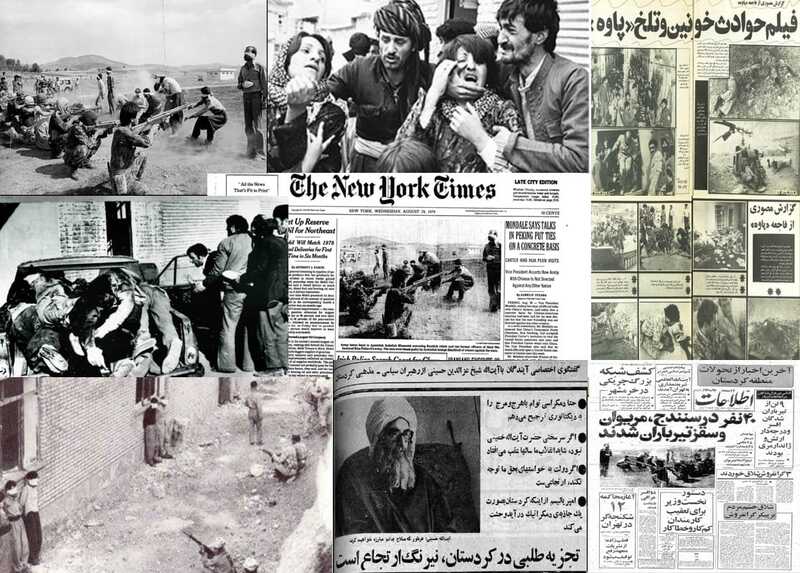
Terrorist Acts Abroad
The IRI has carried out tens of terrorist acts against their enemies abroad resulting in hundreds of deaths and injuries.
Among the victims of this omen regime out of Iran's borders, there are at least 22 well-known figures' names, some of whom were senior officials of the Shah regime including Shapour Bakhtiar, the last prime minister of that regime. There are also Dr. Ghasmlou and Dr. Sharafkani's names as victims of the terrorist acts of IRI who were two leaders of the Democratic Party of Kurdistan of Iran.
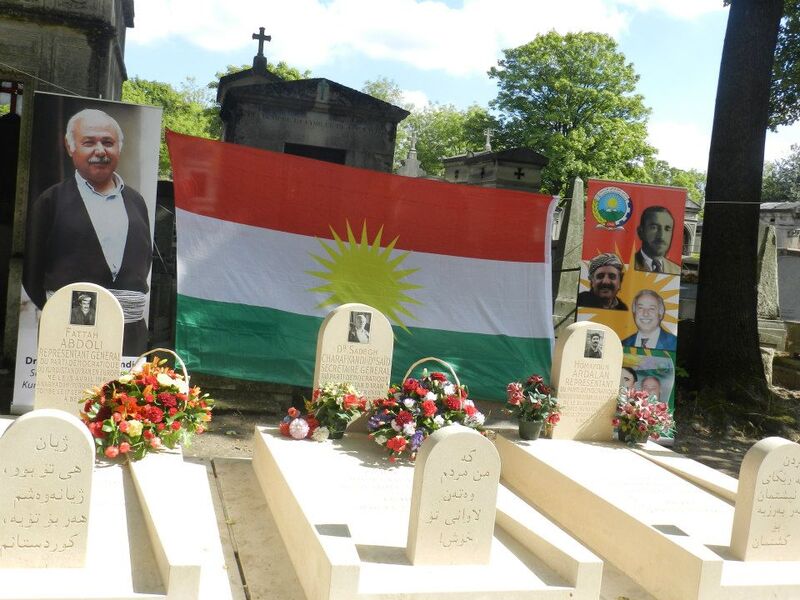
The Martyrs of the Zhina Revolution
On September 17, 2022, after Zhina Amini was arrested by the security forces of Iran's regime and was tortured by them died as a result of their cruel behavior, the protestors gathered in front of Kasra Hospital in Tehran and began to demonstrate against this crime of the regime. This was the beginning of a revolution in Iran known as the Zhina Revolution. According to the data published by the Hengaw website, from the beginning of this revolution to March 11, 2023, at least 134 citizens were killed in different cities of Kurdistan and Iran.
Based on the Iran Human Rights Organization, in the first three months of this revolution, 496 people were killed, 68 of whom were children. On Friday, September 30, 2022, the IRI forces opened fire on the Balouchi protestors, and based on the information received from the Balouch activists at least 100 people were killed and 300 more were injured. That day is now known as Black Friday.
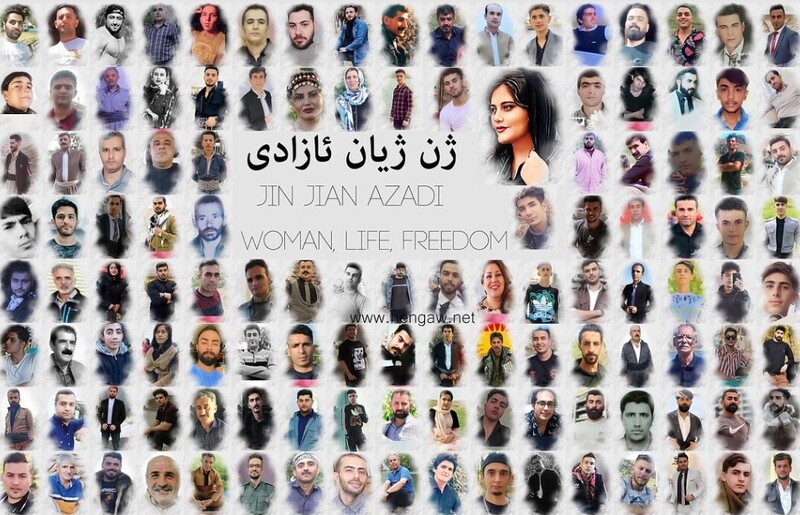
The Killing of Kolbars
Regarding the killing of Kolbars, the Kurdpa website published data that indicates 197 Kolbars were killed from 2011 to 2015 by the regime's direct shooting and 229 more Kolbars got injured.
Hengaw's website also published data that indicated 450 Kolbars were killed (from 2016 to 2023) and 180 others were injured.
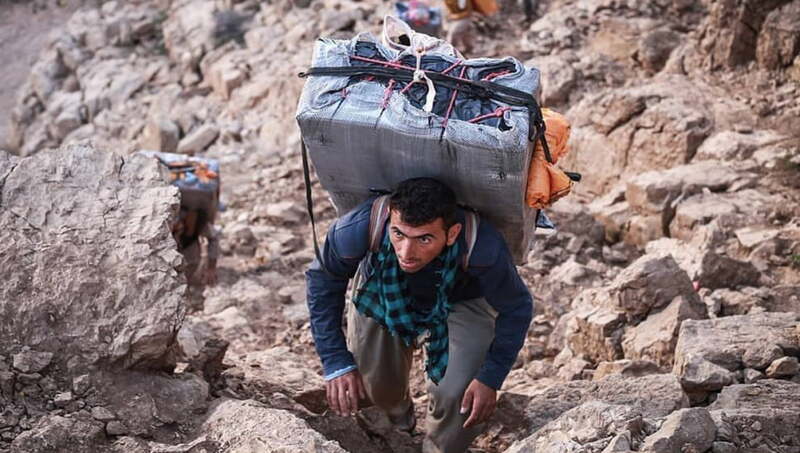
Martyrs of Freedom
After the Islamic regime of Iran closed all doors of dialogue on the Kurdish people in the East part of Kurdistan and paved the way for suppression, arrest, and killing of the Kurdish people, these people decided not to surrender and they chose to resist the most brutal attacks by the Iranian regime.
In the war and resistance against the IRI, many Kurdish people who volunteered to sacrifice their lives for Kurdistan were martyred. Although there is no clear and verified data, however, it is estimated that about 7 thousand people were martyred and more than 10 thousand got injured.
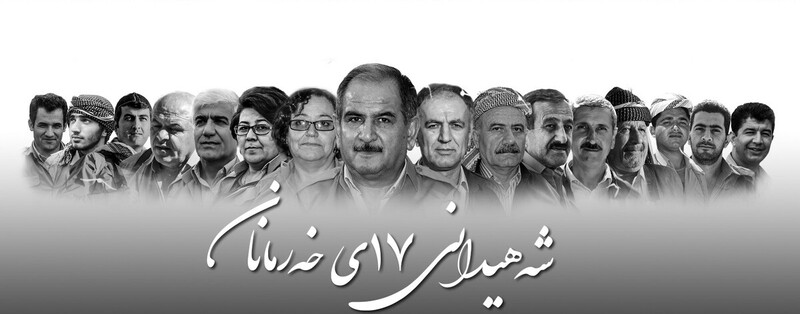
Conclusion
According to the Iran Human Rights Organization data, from 1979 to 2020, more than 44 thousand 600 people were killed by the IRI forces through assassination, torture, or being killed on the streets. Based on an article published in the French newspaper Figaro, 150 people died by the "stoning" death sentence.
The Islamic Republic of Iran has committed all these crimes against the people of Kurdistan in order to end the revolutions and attempts of the people of Kurdistan for freedom and liberation, but after more than 40 years of authority, the Kurdish people are still keeping their activities for their revolution in the East part of Kurdistan in order to gain their rights. After Zhina's Revolution, it will be the Iranian Regime that is getting closer to its end.

